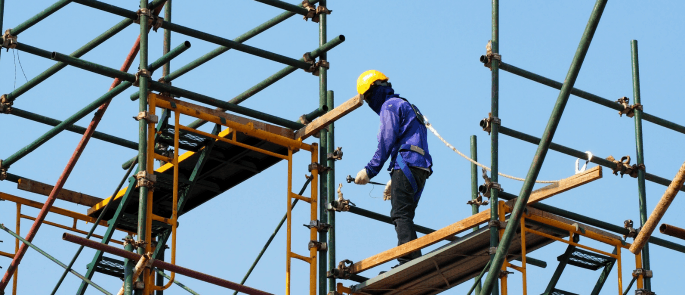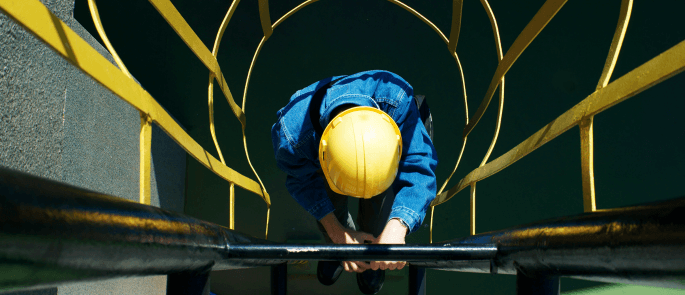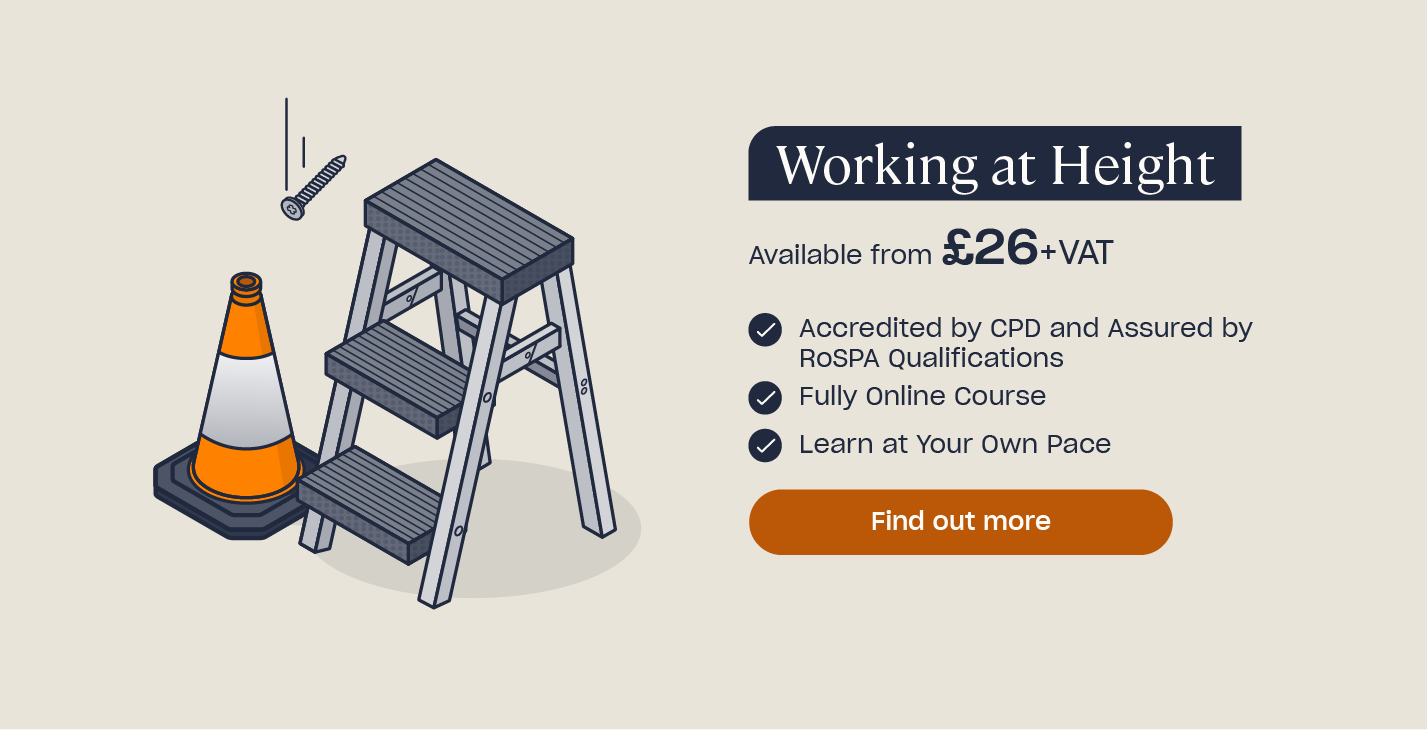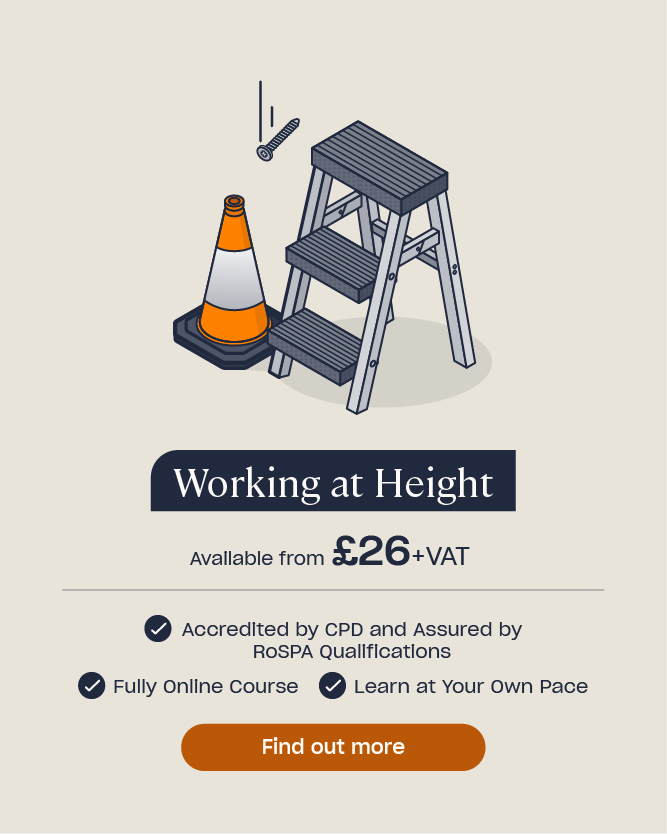Working at Height Rules and Regulations
Falls due to working at height are the biggest cause of workplace deaths and injury in the UK, accounting for approximately a quarter of fatal accidents in the workplace each year. In this article, we’ve collated some simple rules for working at height to ensure you and your employees remain safe.

Safety Rules for Working at Height
- Avoid the need for working at height wherever possible – for example, could you use a long-handled tool or lower the object down to the ground?
- Always select work equipment that is safe to use and suitable for the task at hand. Think about whether the new equipment will create any new hazards.
- Locate airbags as close as possible to the working area.
- Allow adequate clearance for safety nets and harnesses.
- Choose collective protection that safeguards multiple people before issuing personal protective measures.
- Always have emergency or rescue procedures in place to deal with any situation in which an accident may occur.
- Always follow the manufacturer’s instructions for work equipment.
- Use one of the two HSE and industry approved methods for assembling and dismantling towers: the ‘advance guard rail system’ or ‘through-the-trap’ (3T).
- Construct tower scaffolds on firm, level ground with locked castors and a supported base plate.
- Never use a tower scaffold in strong wind or if any parts are broken or missing.
- Introduce daily checks to ensure machinery and equipment is safe or decide whether it needs maintenance.
- Only use ladders when other work equipment is not feasible. Furthermore, you should only use a ladder for work up to 30 minutes in one position, with a load of no more than 10kg.
- Always maintain three points of contact when using a ladder, i.e both feet and one hand. Don’t over-reach and use the top three rungs as a handhold, not a working position.
Need a Course?
Our Working at Height Training helps you to comply with the Work at Height Regulations 2005 by providing employers and employees with the necessary information needed to be able to successfully deal with working at height risks and control measures.
Working at Height Regulations
The main legislation for working at height is the Work at Height Regulations 2005, which cover a wide range of activities, including:
- The use of a ladder or stepladder.
- Work on a flat, scaffold or mobile elevated platform (MEWP).
- Work on the back or top of a lorry.
- Work in areas where someone can fall from an edge, through an opening, or through a fragile surface.
- Work at ground level close to an opening, hole in the ground or excavation that someone could fall into.

The full Work at Height Regulations 2005 can be found on the government’s legislation website.
Under the working at height regulations, employers must:
- Assess the risks in their workplace so that they can put in place a plan to control the risks. This is done through the form of a risk assessment.
- After assessing the risks, ensure suitable control measures are put in place, including issuing Personal Protective Equipment, introducing machinery or providing training.
- Ensure that no person engages in any activity in relation to working at height or equipment for work at height, unless they are competent to do so or, if being trained, are supervised by a competent person. Safety Harness Training is important here.
- Ensure that no one passes across, near or works on, from or near a fragile surface.
- Take suitable and sufficient steps to prevent, so far as is reasonably practicable, the fall of any material or object.
- Take steps to ensure that no material or object is thrown or tipped from height in circumstances where it is liable to cause injury to any person.
- Take steps to ensure that materials and objects are stored in such a way as to prevent risk to any person arising from them collapsing, overturning or moving unintentionally.
- Report to their manager or supervisor any defects or activities relating to work at height, which they know are likely to endanger the safety of themselves or another person.
- Use any work equipment or safety device provided for work at height by his employer.
- Adhere to any training in the use of the work equipment.
- Take care to ensure that their activities do not put others at risk.

Think you know enough about working safely at height? Take our quick online quiz to test your knowledge.
Further Resources:
- Working at Height Regulations; Hierarchy of Control Measures
- Working at Height Risk Assessment
- What is a Method Statement & How Do I Fill it in?
- How to Develop a Rescue Plan for Working at Height
- Working at Height Training











